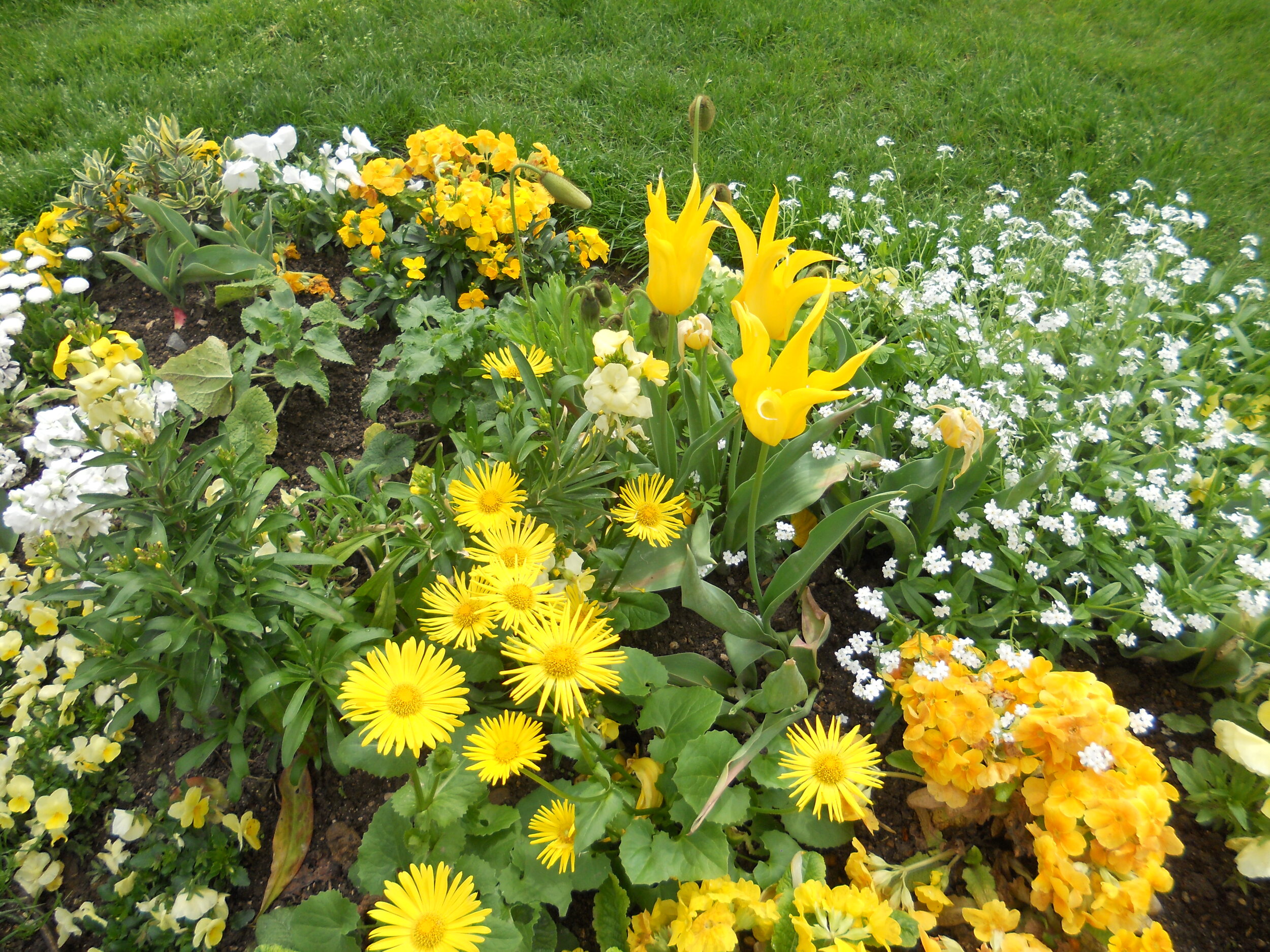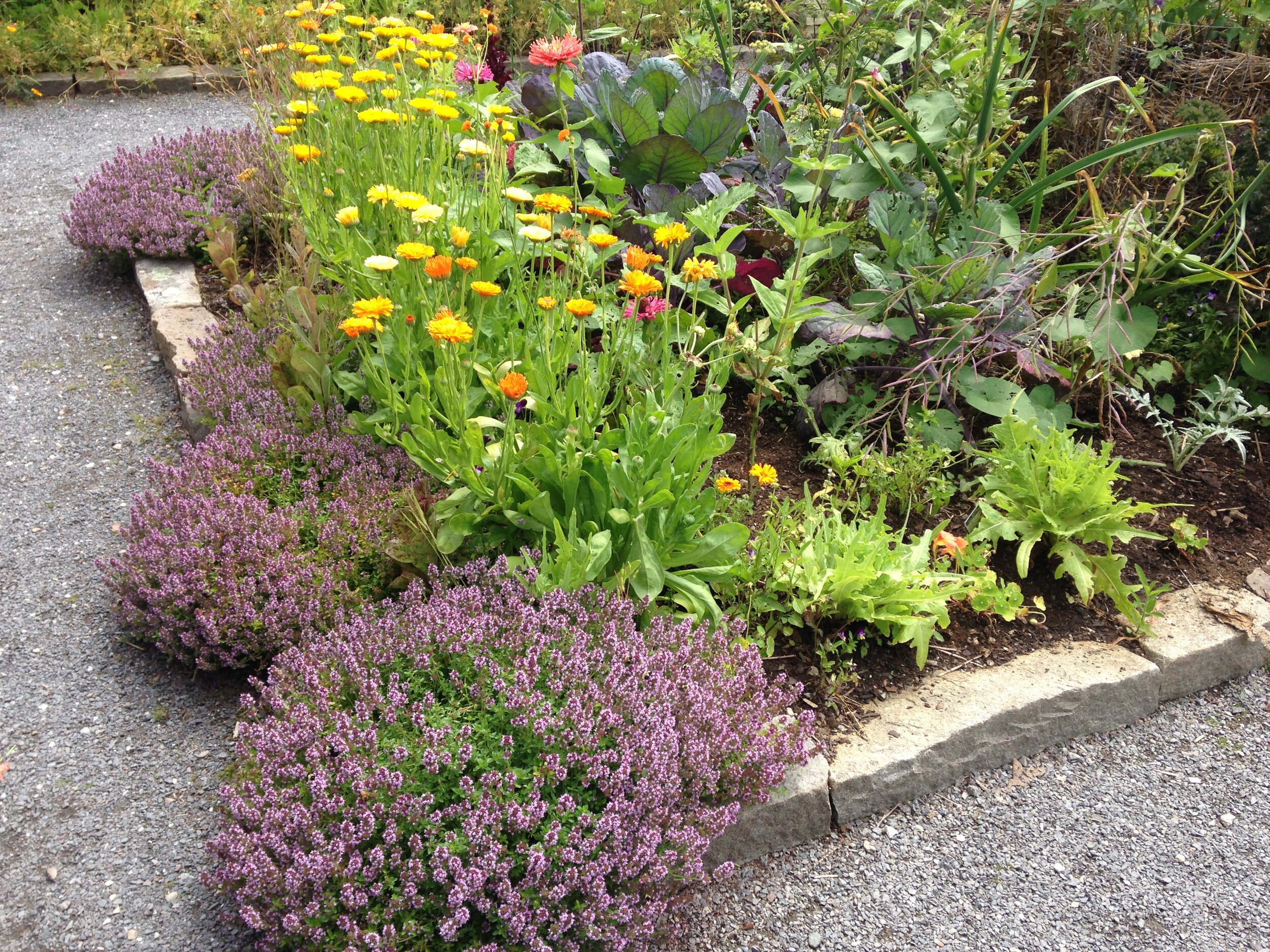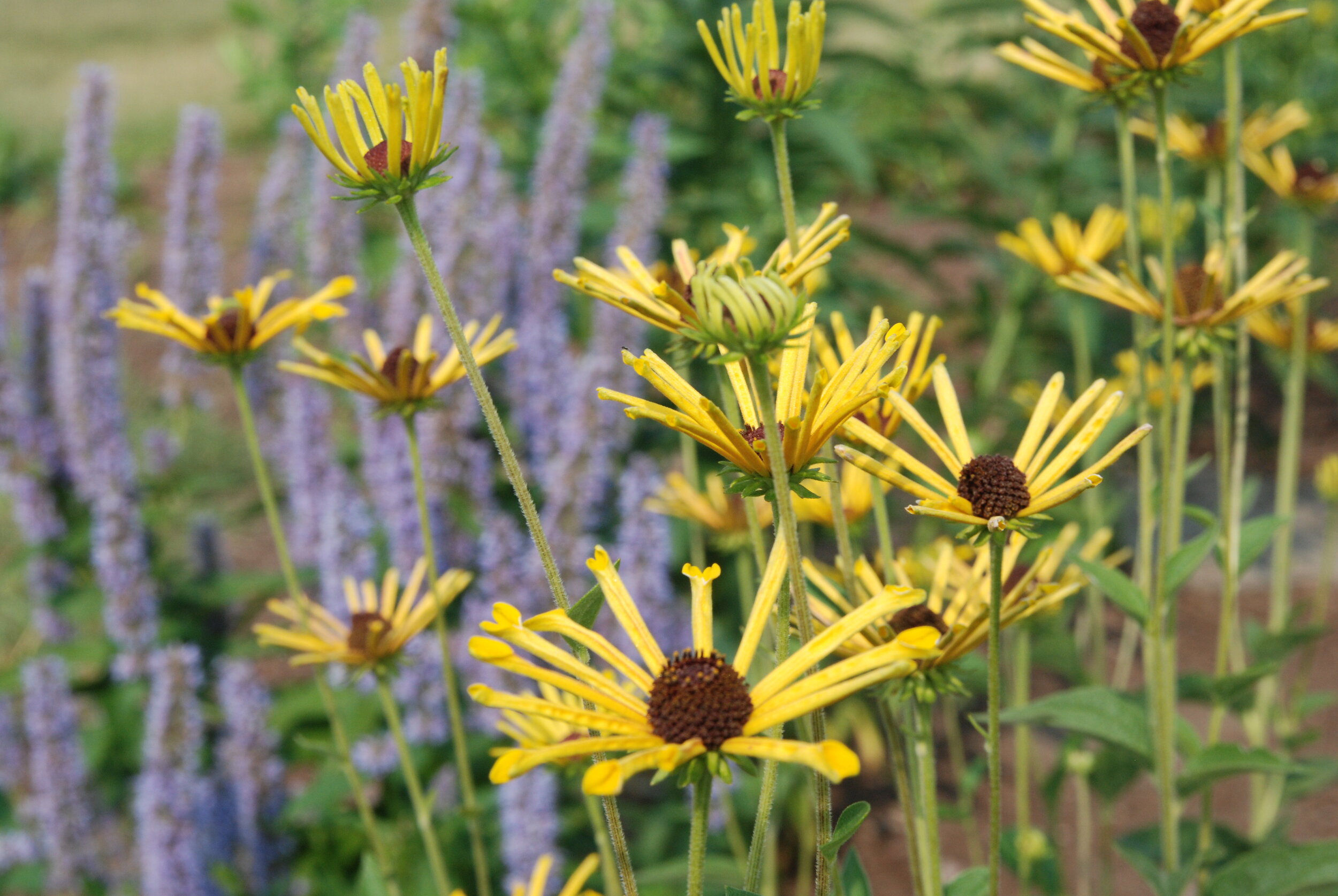PANTONE recently announced it’s Color of the Year for 2021 - actually two colors, yellow and grey. The yellow is described as warming and optimistic, with the “promise of something friendly.” Given everything that’s been going on in the world with the Covid-19 pandemic, the choice is interesting - yellow is positive and it’s a color that brings energy and vitality. PANTONE 13-0647 is a happy shade that works well in gardens (grey not so much). If you’re looking to add some warmth and optimism here are some great plant choices.
Daffodils with egg yolk centers start blooming early and can naturalize or spread.
Above: jonquils are miniature daffodils with smaller but more prolific flowers. They’re great to plant in masses because they’re usually quite fragrant and the shorter stature means leaves aren’t such an issue when the bulbs die back. Order in late summer and plant in the fall when temperatures drop.
Above: mixing yellow with white and silver makes a beautiful combination. There are hundreds of yellow tulips to choose from if you want to make a statement in springtime.
Below: in the vegetable garden, yellow calendula is a cheerful accent that will bloom until frost if kept deadheaded. Orange varieties are fun too! Calendula is an edible flower - try adding to salads or use to garnish platters.
Below: drought tolerant yarrow attracts bees and butterflies and looks great with wispy ornamental grasses and the spikes of Salvia nemerosa ‘Caradonna’.
Perhaps the most ubiquitous summer yellow are rudbeckias, a large family of plants that bloom in late summer and continue into fall. They’re drought tolerant, unfussy, and work well in naturalistic settings designed with a lot of textural grasses.
Above: Rudbeckia ‘Goldsturm’ with hydrangea ‘Annabelle’
Sometimes called the three-leaved brown-eyed Susan, Rudbeckia triloba is good choice for naturalistic borders or meadows. In the photo above I’ve paired it with fountain grass in my garden.
The longest blooming yellow flower in my garden is the gloriosa daisy, Rudbeckia hirta, a short-lived perennial that will reseed. In the photo above a cultivar of R. hirta has been planted with a purple annual salvia in a display garden at Shelburne Farms (photo taken in September).
Below, a mass planting of gloriosa daisies are simply stunning at the Montreal Botanic Gardens.
One of my favorite black-eyed Susans is Rudbeckia subtomentosa ‘Henry Eilers’ a very tall prairie-style perennial that grows up to 8’. Unusual quill-like petals persist for a long time in August-September and look especially good with tall feather reed grass and blue agastache.
Below: don’t forget about marigolds - they’re prolific and super happy (and edible too). Keep them deadheaded to promote more blooms. Photo below was taken at the Luxembourg Garden in Paris where the beds are stuffed with eye-popping designs every summer. I usually always add them to my raised vegetable garden beds along with sunflowers and zinnias and love their spicy smell.












